This may be the most humorous series I’ve ever photographed but then my mother always did say I had a warped sense of humor.
- I seldom post the same species two days in a row but in this case I’ll make an exception (I don’t know the sex of this bird but for the sake of convenience I’ll refer to it as a male).
1/2000, f/7.1, ISO 500, Canon 7D Mark II, Canon EF 500mm f/4L IS II USM + EF 1.4 III Extender, not baited, set up or called in
Yesterday morning on Antelope Island I spent some time with this Western Meadowlark as he foraged for food in the vegetation that’s now finally greening up. Usually when a bird turns its back to me I don’t fire off any shots so I missed it when he used his bill to turn over the bison poop we see in front of the bird to the left. But he seemed to have found something edible under the bison dropping so at that point I began to fire off a burst to see if I got lucky with something interesting.
Anyone who’s grown up on a farm knows that large animal droppings often have a host of invertebrate critters living beneath them. Hungry meadowlarks know that too.
1/1600, f/7.1, ISO 500, Canon 7D Mark II, Canon EF 500mm f/4L IS II USM + EF 1.4 III Extender, not baited, set up or called in
When he stood more erect he seemed to be tugging hard on something but at first I couldn’t see what it was.
- How well do you remember your high school biology? Earthworms have several rows of stiff bristles on the ventral side of their body called setae. Those bristles point backward and are used to push against the soil as their body propels itself forward in the burrow. They also make it very difficult to pull an earthworm out of its hole – as any bait fisherman knows and this meadowlark is about to find out.
1/2500, f/7.1, ISO 500, Canon 7D Mark II, Canon EF 500mm f/4L IS II USM + EF 1.4 III Extender, not baited, set up or called in
It was an earthworm. Here we see part of it (nearly parallel to the bird’s left leg) and being stretched between the burrow that it desperately clung to and the pulling bill of the meadowlark,
1/2000, f/7.1, ISO 500, Canon 7D Mark II, Canon EF 500mm f/4L IS II USM + EF 1.4 III Extender, not baited, set up or called in
The bird pulled harder on the worm…
1/2000, f/7.1, ISO 500, Canon 7D Mark II, Canon EF 500mm f/4L IS II USM + EF 1.4 III Extender, not baited, set up or called in
until it was stretched as thin and tight as a piano wire. Something had to give and something did.
1/2500, f/7.1, ISO 500, Canon 7D Mark II, Canon EF 500mm f/4L IS II USM + EF 1.4 III Extender, not baited, set up or called in
The end of the tightly stretched worm finally popped out of the hole and when it did the release of all that stored energy twisted the bird to my right and gave me a perfect look at the bird, the recoiling worm and the results of all that released tension. For me this is the money shot – the one that finally tells the story that was more difficult to interpret in the previous images. And it’s the one that makes me smile.
1/2500, f/7.1, ISO 500, Canon 7D Mark II, Canon EF 500mm f/4L IS II USM + EF 1.4 III Extender, not baited, set up or called in
After all that effort it didn’t take him long to gobble down the worm.
All this happened so fast I didn’t really know the details until I reviewed the images at home. All I knew in the field was that the bird turned over the poop, found something, struggled with it for a few moments and then swallowed it. When the shutter is firing that often and that quickly it obscures my view so sometimes it’s difficult to know exactly what’s going on.
Anyway, these images gave me a laugh and I hope you enjoyed them too.
Ron


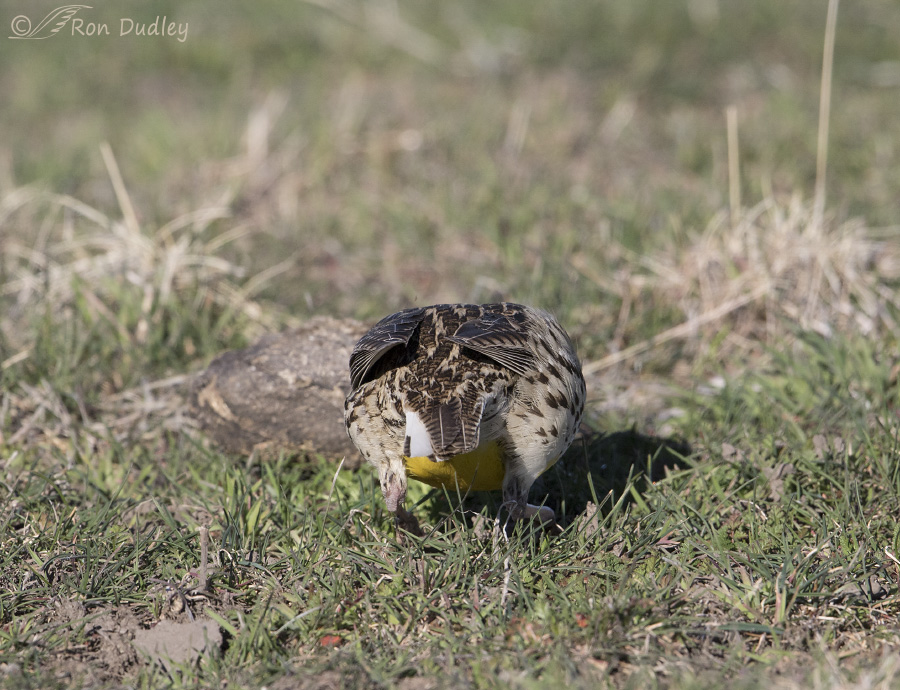

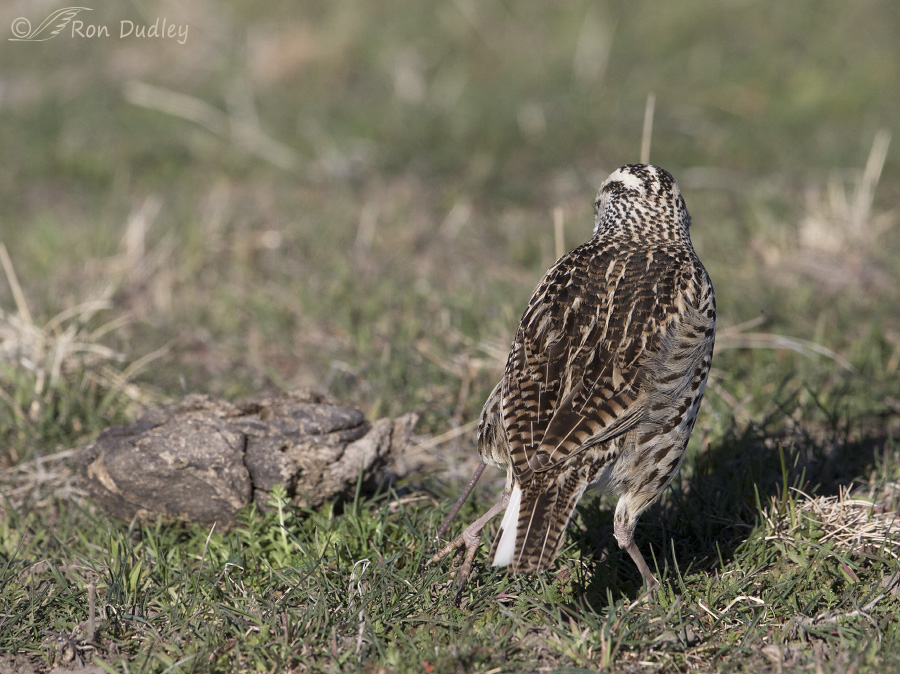
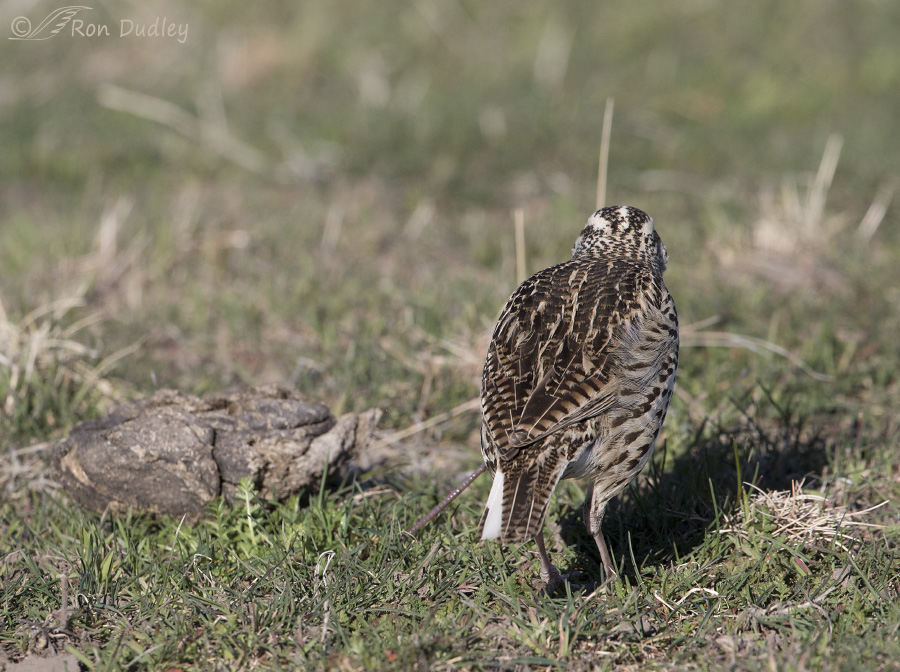
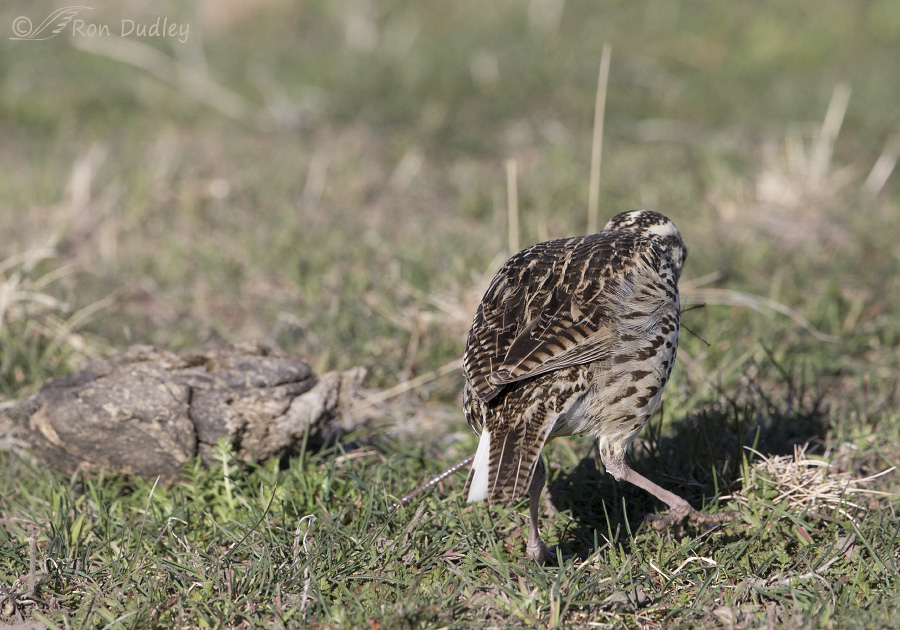
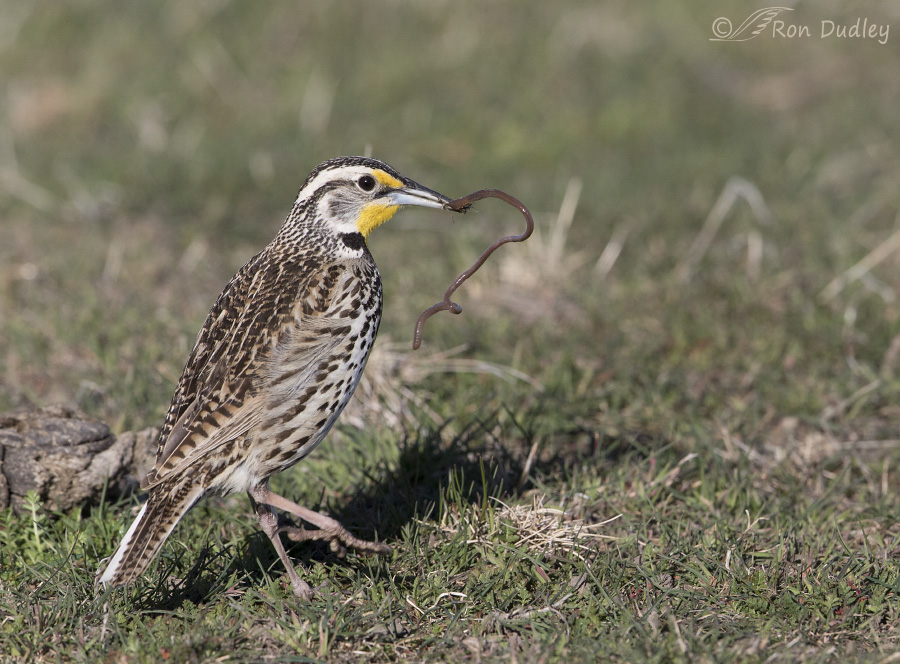
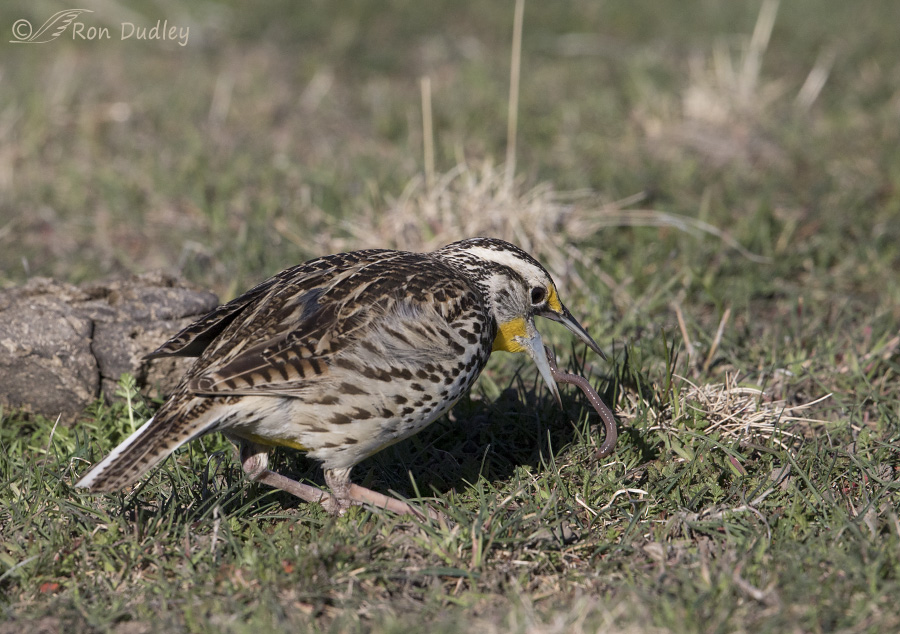
Even when I can’t get to my email, I know there’s joy waiting for me among all the other stuff. What a terrific series! Of course, I love it that the meadowlark prevailed, but it goes to show that life isn’t easy in The Great Out There. But more importantly, when you think you’re thwarted by life’s poop, there COULD be something really good under that pile. That’s an enormous life lesson.
Very nice. As field biologists, we periodically stumble on something very interesting, even unique, but very few of us are like you Ron, rapidly shooting of a sequence of great shots that allow us to relive the story, understand it better, and better still, share it with others. Thank you!
Anyone else have the stretching and snapping cartoon sound effect in their head with the stretching and releasing worm?
These are great! They made me smile, too.
Good. Thanks, Kathleen.
Ron, it is pretty interesting that your interest in biology may have been inspired by turning over Cow Pies!! I grew up on a farm but was not quite as adventurous!!
Great photos and an interesting story. That was a very long worm!! Thank you so much.
I don’t know that it was, Alice. But it’s possible…
I will head off to my voluntary work shortly with a huge smile. Thank you.
Mind you it also reminds me of my brother’s use of cow pats. They put large firecrackers in (preferably reasonably fresh ones). When the crackers exploded the fall-out, fall-up and fall-around was incredible.
I’ve done that before when I was a kid on the farm, EC. Didn’t take much to amuse me back then.
Wonderful series of photos. I can never get close to the Meadowlark, let alone take a picture of them. Love them.
Thank you, Trudy.
There could be something good for all of us under all the poop that is out there! This was excellent! It’s not wise to delete images on your camera before you see them on the computer. Thanks, Ron
I agree, Judy. I never chimp (delete images on the camera when I’m in the field).
The early bird gets the worm. And the early bird photographer gets the worm “money” shot. That is one stretchy worm! I’m actually kind of fond of the first tushie shot because his little yellow tummy is showing. The last two are great. It looks like he may be missing a few feathers around his mandible. Perhaps the worm fought back.
That is one stretchy worm! I’m actually kind of fond of the first tushie shot because his little yellow tummy is showing. The last two are great. It looks like he may be missing a few feathers around his mandible. Perhaps the worm fought back. 
Thanks, Marty.
Great series…was puzzled at first by first shot…As usual, felt sorry for the “victim”–struggling so hard to survive–then failing and down the hatch! Sparrows used to hang put around the barn and find all kinds of interesting stuff in the manure pile, sometimes getting their eyes glued shut with it then we’d have to catch them and bathe them with warm water…
That’s what you call getting too close to poop.
LOL!
A happy ending for everyone but the earthworm. Excellent series, especially the “rebound” shot.
Thanks, WC. That photo is my favorite too. By far. But I do think the others help to tell the story.
Great action shots Ron!
Charlotte
Thanks, Charlotte.
I have been enjoying this series very much as a Meadowlark is one of my favorites! Growing up in Southern Ontario, Canada we saw the Eastern variety often. Now, living in the Maritimes on the east coast I see them rarely unless visiting the Annapolis Valley. The struggle between the meadowlark and worm is entertaining but has a life and death conclusion underscoring the basic fact that hunger and survival is a major driving force in nature no matter how small the drama. Thanks again for sharing
I’m glad you enjoyed it, Robert. Thank you.
I agree, this is a fun series of images and post. Good biology lesson as well, lets people know why Robins have to struggle pulling earthworms from the lawn.
The major storm has passed, BUT it is still snowing on top of 18-20 inches of powder. I have seen pictures of snowfalls in the West that cover from ground to the top of doors. Due to the wind and drifts ours is up to the middle of some windows, not like the West, but sure higher than in recent memory.
Thanks, Dick. I’ve been thinking about all you folks in the northeast enduring that storm and its aftermath. Hope you’re hunkered down.
Yes! I was unaware of why, but did know earth worms don’t want to be pulled from their holes! “Cow Pies” and related “pies” are centers of a lot of activity for sure plus warming the ground a bit.
I was unaware of why, but did know earth worms don’t want to be pulled from their holes! “Cow Pies” and related “pies” are centers of a lot of activity for sure plus warming the ground a bit.  The shot where it gave was worth the butt shots! Glad you got them and reviewed the shots closely.
The shot where it gave was worth the butt shots! Glad you got them and reviewed the shots closely.
Judy, I figured you’d know very well how productive “pies” are for producing interesting critters. As a little kid in Montana I remember turning them over in the pasture by the dozens just to see what I might find – the beginnings of my interest in biology?
Great!
Thanks, CaJ.